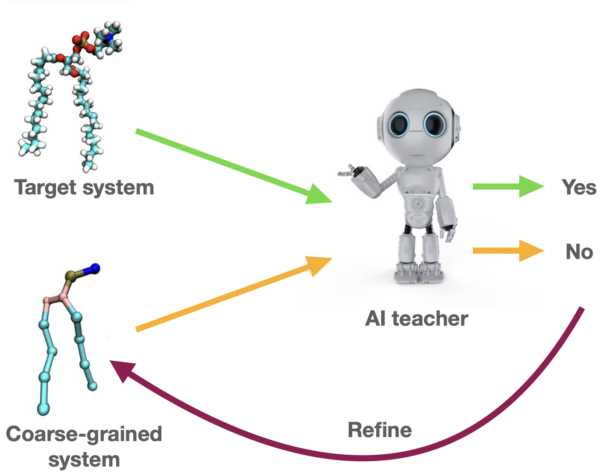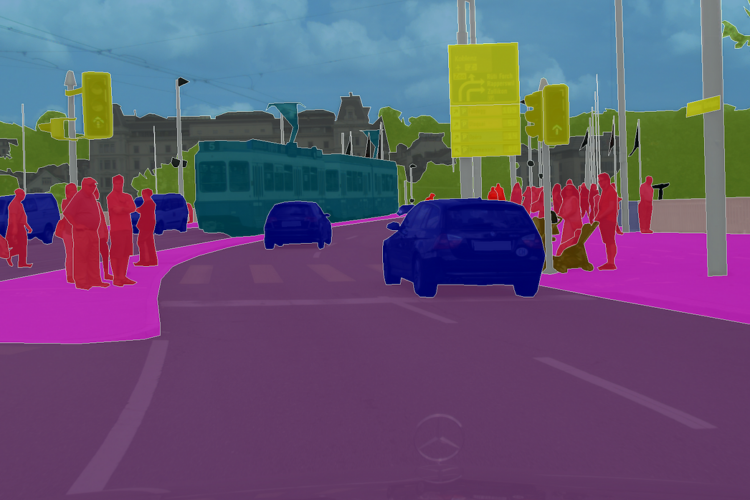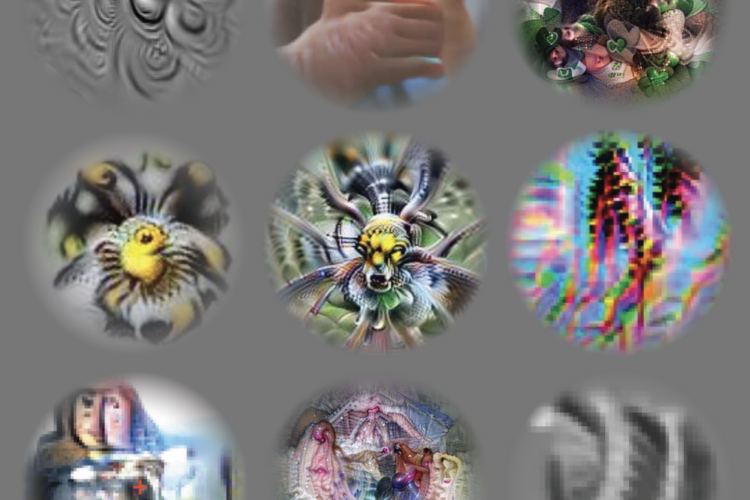AI as a Great Teacher for Molecular Dynamic Modeling
We are in an era where computational tools and resources are rapidly advancing, driving our exploration in scientific domains. A prime example of this advancement is the development of simulation tools for molecular systems, sometimes referred to as “the computational microscope.” These tools allow us to delve into the atomic details of biological molecules and their interactions in ways that traditional experimental techniques cannot.
In all biological systems, including humans, biomolecules engage in complex interactions that are crucial for sustaining life, yet understanding these interactions poses significant challenges. Simulation tools enable researchers to gain more insights into these systems. Based on these insights, we can design more effective drugs, elucidate disease mechanisms at a molecular level, and engineer biomaterials with tailored properties.
Typically, simulating a biomolecular system involves modeling the interactions between thousands of atoms over more than 1012 steps, a task that remains computationally demanding even for modern high-performance computers with hundreds of CPUs. One strategy to mitigate this challenge is to develop less detailed but still accurate models known as coarse-grained models. These models have been successfully used to study large biomolecule complexes, such as the HIV capsid (a protein shell that encases the virus’s genetic material). This research offers new insights into the virus and aiding therapeutic development.

From: https://www.science.org/doi/epdf/10.1126/sciadv.add7434
One significant challenge in the field of building coarse-grained models is to faithfully reproduce the dynamics of the system we wish to investigate. This task is almost akin to a mission impossible because the dynamics of a system are usually highly sensitive to the interactions between its components. Just as the quality and impact of a musical performance depend not only on the precise tuning of each instrument but also on the interplay of numerous factors—such as the skill and emotion of the musicians, the type of instruments used, and even the response of the audience—so too does the simulation of biological systems depend on multiple finely adjusted interactions. Without a clear understanding of how the interactions between components contribute to its outcomes, which is unfortunately true for both musical performance and biomolecular modeling, it becomes extremely difficult to predict and control system behavior effectively. Nonetheless, accurately modeling the dynamics of biomolecules is crucial, as many studies have revealed the profound connection between the kinetic of the biomolecules, i.e., how fast changes between different states, and their functional roles.
The development of machine learning methods are one step towards solving this problem. In particular, the solution comes from the ideas behind generative AIs, which are capable of generating images almost indistinguishable from real ones. But what is the connection between such seemingly unrelated tasks? This link lies in the concept of probability.
All data adhere to specific distributions, whether they be pixels in images or letters in text, and generative AI learns to replicate these statistical properties. For instance, by training on diverse dog images, generative AI can discern typical canine features like shapes and colors. Similarly, when applied to coarse-grained modeling in physics, these AI techniques can learn to mimic the essential dynamics and interactions of a system by recognizing and reproducing the governing statistical distributions. This capability enables us to create highly accurate, simplified models of complex systems, providing a powerful tool for exploring phenomena that might otherwise be computationally prohibitive to study in detail.
Adversarial training is one of the widely used strategies in training generative AI models. Adversarial training involves a dynamic interaction between two models. One model, known as the generator, attempts to create data so convincingly real that it could be mistaken for genuine data. The other model called the discriminator, evaluates whether the data produced by the generator is authentic or fabricated. Imagine the generator as a student trying to solve complex problems, while the discriminator acts like a teacher assessing the student’s solutions. The student (generator) strives to refine their answers based on the teacher’s (discriminator’s) feedback, aiming to develop solutions so accurately that they perfectly mimic a correct answer. Over time, this process helps the student understand deeper principles and apply them correctly, just as it improves the generative model’s ability to produce realistic and accurate outputs. This interaction process helps both models improve over time — the generator becomes better at producing realistic data, and the discriminator becomes better at identifying fakes. The result is an AI system that can understand and replicate complex patterns in data much more effectively.
Building on the idea of adversarial training, let’s explore how we can apply this technique to construct a coarse-grained model that effectively simulates the dynamics of a target system. Different from a typical scenario in which interplay occurs between two neural network models, in our framework, the “student” neural model is replaced by the coarse-grained (CG) model, and it is optimized according to the feedback of a “teacher” neural network model. Here’s how it works: The CG model, acting as the generator, attempts to generate trajectories that capture the essential dynamics of the original system. On the other side, we have a neural network that serves as the discriminator. This neural network has been trained to understand the detailed dynamics of the system, which it uses as a benchmark to evaluate the accuracy of the CG model. The discriminator assesses whether the outputs of the CG model closely match the real system’s dynamics. Whenever the CG model generates a new set of dynamics, the discriminator checks these against its knowledge of the true dynamics. If the trajectories are not accurate enough, the feedback from the discriminator informs the CG model of the specific aspects where it needs improvement.

This iterative process is akin to a continuous loop of hypothesis and verification, where the CG model proposes a set of dynamics and the neural network validates them. Through this adversarial process, the CG model is constantly learning and adjusting. It refines its parameters to better mimic the real system’s behavior, enhancing its ability to predict new situations with greater accuracy.
This methodology that we are developing offers a new perspective on modeling the dynamics of biomolecular systems, showing instead of their direct application in scientific discovery, the AI models synergize with existing methods to embrace the application in challenging situations. With the support of AI and powerful computational resources, we are moving steadily toward precise and efficient digital simulations of living systems.
This work was supported by the Eric and Wendy Schmidt AI in Science Postdoctoral Fellowship, a Program of Schmidt Sciences.



